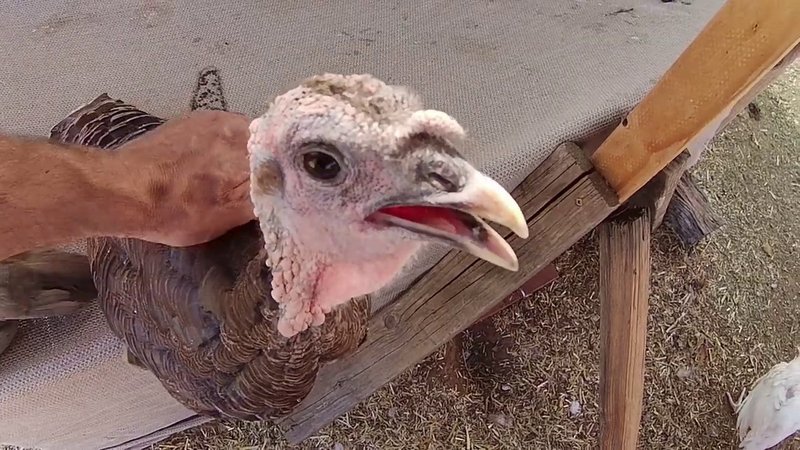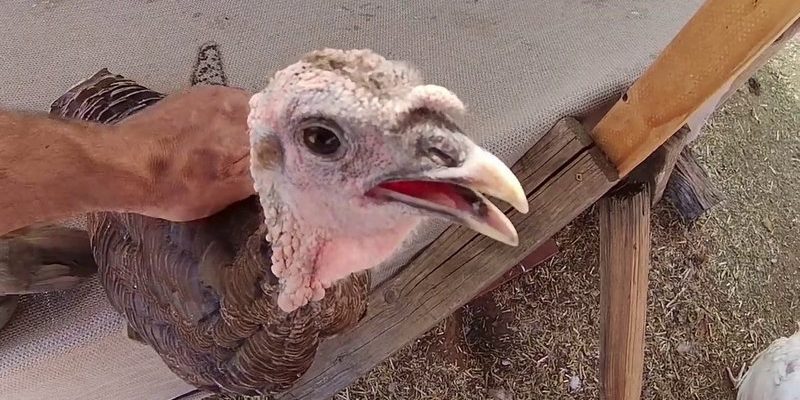
Training a turkey might sound odd at first, but just like teaching a dog or a cat, it’s all about patience, consistency, and understanding their nature. Turkeys are social creatures, and they respond well to gentle handling and socialization. In this guide, we’ll explore how to train a turkey effectively, handle them properly, and create a friendly environment for socializing. Let’s dive into the world of turkey training!
Understanding Turkey Behavior
Before diving into the training, it’s essential to understand the unique behaviors of turkeys. These birds are naturally curious and social. In the wild, they live in small groups, where they interact and communicate with one another. This social nature means that with the right approach, they can learn and adapt to human interaction quite well.
A turkey’s behavior can also depend on its breed. For instance, the Broad Breasted White tends to be more domesticated and friendly, while the Heritage breeds are often more alert and wary of human interaction. Knowing your turkey’s breed can guide you in choosing the right training methods. Ultimately, the key is patience; turkeys may take their time to understand what you’re asking of them.
You might be wondering, “Can my turkey really learn commands?” The answer is yes! Turkeys can learn to recognize simple cues and even associate them with rewards. For example, if you consistently use a phrase like “come here” while offering treats, your turkey will start to make the connection. This brings us to the next step: handling and socializing.
Handling Your Turkey: The Basics
When it comes to handling a turkey, gentleness is critical. Start by letting your turkey get used to your presence before you attempt to pick it up. Spend time sitting quietly near them. This way, they can observe you and become more comfortable. When they seem relaxed, gently extend your hand.
To properly pick up a turkey, do so by approaching calmly and cradling its body. You should support its chest with one hand while the other hand holds the legs securely. It’s important to hold them firmly but gently. If you do it right, your turkey should feel secure rather than scared.
Avoid sudden movements or loud sounds, as these can startle them. Turkeys can be quite sensitive, so creating a calm environment is essential. Over time, with consistent handling, your turkey will learn to trust you, making training much more effective.
Socializing Your Turkey: Building Trust
Socializing a turkey is all about building trust. As we mentioned before, turkeys are social animals, and they thrive on interaction. Start by spending time with your turkey every day. Talk to them softly and even offer treats like corn or mealworms. These little incentives can go a long way in building a bond.
It’s also helpful to introduce your turkey to different people. Have friends or family members spend time with your turkey, so it becomes accustomed to various voices and scents. Just keep it a calm process; don’t overwhelm them with too many new faces at once. Allow them to interact at their own pace.
You might find that your turkey starts to respond differently as they become more socialized. They may come closer, make soft calls in response to you, or even follow you around. This change can be incredibly rewarding and is a sure sign that your turkey is learning to trust you.
Training Techniques for Your Turkey
Training a turkey can be fun and rewarding! Here are a few simple techniques to help you get started:
- Clicker Training: Use a clicker to mark desired behaviors. When your turkey does something right, click and follow it up with a treat. Over time, they’ll associate the click with positive reinforcement.
- Basic Commands: Start with simple commands like “come” or “sit.” Use consistent words and motions so your turkey learns what you expect.
- Short Sessions: Keep training sessions brief—about 5 to 10 minutes. This helps maintain their attention and enthusiasm without overwhelming them.
- Positive Reinforcement: Always reward good behavior with treats, petting, or praise. It’s essential to create a positive atmosphere during training.
Remember, the goal isn’t to force them into compliance, but to create an engaging and positive experience. If a turkey seems disinterested or stressed, take a step back and give them some space.
Common Challenges and Solutions
Training turkeys can come with its share of challenges. One common issue is a turkey feeling scared or threatened. If you notice your turkey acting skittish, try to assess your approach. Here are some tips to ease their anxiety:
- Give Them Space: If your turkey runs away, don’t chase them. Instead, allow them time to adjust to your presence.
- Be Patient: Results won’t happen overnight. Some turkeys take longer to warm up, so be patient and consistent.
- Identify Triggers: Pay attention to what scares your turkey. It could be loud noises or sudden movements. Minimize these triggers during training.
Moreover, some turkeys might have specific personalities, just like people. Some may be outgoing while others are shy. Adapt your training to complement their personality. Remember, the objective is to create a trusting relationship.
Training a turkey is not just about commands and treats; it’s about building a connection. Turkeys are unique animals with their own quirks and personality traits, and getting to know them can be a fun adventure. As you work on handling and socializing your turkey, you’ll likely find yourself developing a friendship that’s both rewarding and fulfilling.
So, whether you’re starting your turkey training journey or looking to improve your skills, remember to be patient and kind. With a little time and effort, you’ll have a social turkey that responds to you and enjoys your company. Enjoy the journey, and happy training!

